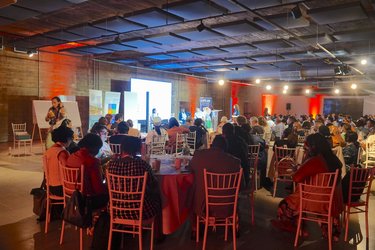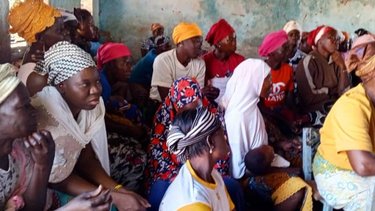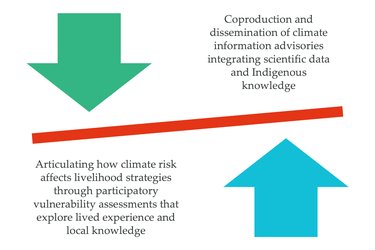

LIFE-AR is transforming climate adaptation by putting local communities in control. The idea of working with the whole of society to achieve a climate resilient future is a core part of the LDC Offer. The governance of decision making on climate actions addresses inequities faced by those in marginalised groups, such as women and young people.
At the heart of this approach, is the focus on empowering institutions to identify, plan, and implement climate resilience programmes that directly address community needs. This includes those working across sectors within local government, with universities, with NGOs and CSOs, as well as government agencies that might be more traditionally associated with combating climate change.
Unlike traditional top-down climate programmes, LIFE-AR prioritises community-led solutions, ensuring that by 2030, 70% of funds will support adaptation investments chosen by local communities.
Strengthening the capacities of local governments and institutions — to both adapt to and withstand climate change and manage climate finance — is central to the values of LIFE-AR. Local governments devise and receive training and support to help them plan, budget, and manage their projects. Planning against known budgets will give local committees the autonomy and transparency to prioritise accordingly, ensuring that resources are channelled directly to the projects that matter most to communities.
Locally devised community awareness-raising activities will also build understanding and enhance inclusivity by ensuring that all voices — especially women, youth and other marginalised groups — are heard. This will promote community-centred decision making, and increase local leadership, trust and collective action. This is critical to ensuring that adaptation investments are aligned with local needs, leading to more sustainable, equitable and effective climate solutions.
LIFE-AR recognises the value of integrating scientific data with Indigenous and local communities’ knowledge. Participatory climate risk and vulnerability assessments promote this integration by directly involving communities in identifying specific climate risks and solutions for different social groups, including marginalised populations. This will ensure that local experiences and knowledge are considered alongside climate information, leading to climate actions that address the specific needs and challenges of the community.
For example, communities and local governments might choose to work together to produce climate advisories tailored to the situation on the ground, helping people make informed decisions about their livelihoods. Accompanying communication strategies help to share this information broadly, using local language, local radio and social media to ensure everyone can access and act on climate information.

LIFE-AR adopts participatory monitoring, evaluation, and learning (MEL) methods to capture not only the successes of community projects, but also best practices and lessons learned. Communities develop theories of change (ToC) to demonstrate how each investment builds resilience to climate risks. Surveys, interviews and focus groups will ensure local voices are central to evaluating these investments.
Communities will also assess both the positive impacts and challenges of the projects, guiding future improvements.
Transforming climate adaptation by putting local communities in control